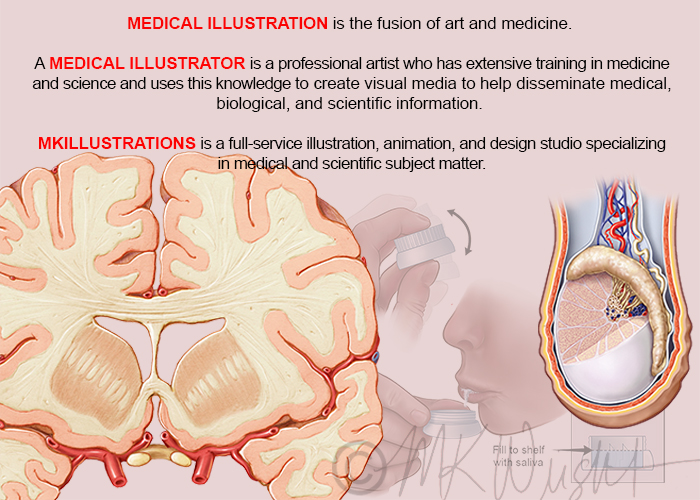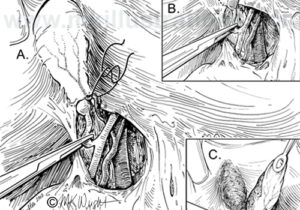When meeting new people, inevitably the topic arises what everyone does for a living. When asked I answer, “I am a medical illustrator.” More often than not I get a look of confusion and the question, ” So, that is…what exactly?” I then simply state how I draw what you see on the walls in your doctor’s office.
But a medical illustrator vividly creates and artistically communicates far beyond what is displayed on the walls of a doctor’s office. We are visual problem solvers, translating complex information into easily understood visual messages. We illuminate a world which few have seen and make it accessible and beautiful. Our profession combines art and science in a way that is visually pleasing and didactic in purpose.
Medical illustrators create artwork in both 2D and 3D using traditional and digital media. However, it’s one thing to make something beautiful, but medical accuracy is integral to our work. Medical illustrators undergo a rigorous curriculum of medical courses including anatomy, neuroanatomy, pathology and surgical observation to name a few. This is in addition to learning traditional and digital media techniques and other specialized art courses. There are currently four very competitive programs in the United States and Canada offering a two-year graduate program in medical illustration, each only accepting 16 or less students each year.
To become a Certified Medical Illustrator (CMI) a medical illustrator must pass an examination covering biomedical science, business practices, ethics and art skills, a rigorous portfolio review, and maintain proficiency through accumulating continuing education credits.
Read more about CMI’s here.
To learn more about medical illustrators and our profession, visit the Association of Medical Illustrators website, here.
To learn more about the four accredited programs for earning a Masters degree in medical illustration, go here.







